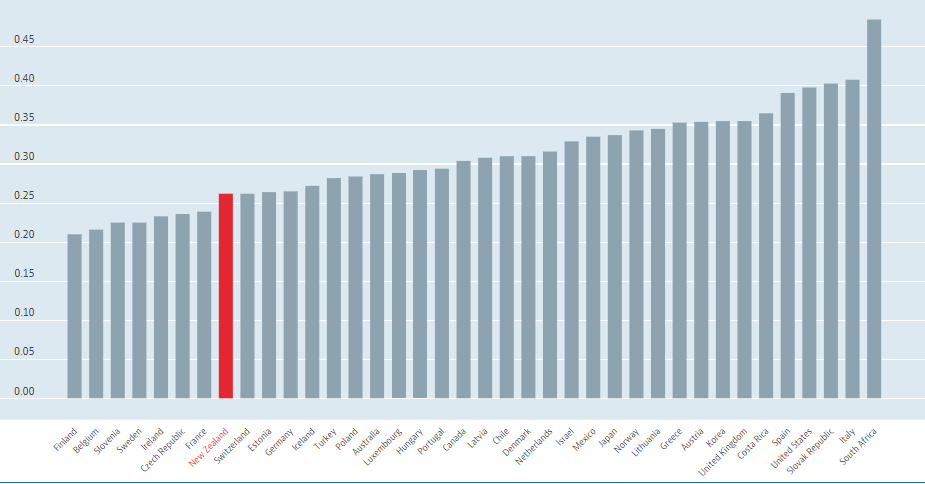OECD report 2020 (prior to the covid pandemic) stated the following about New Zealand
- high employment
- strong levels of social support and trust making
- outstanding natural beauty
OECD report 2020 (prior to the covid pandemic) stated the following about New Zealand
However, not everyone enjoys the same levels of well-being. There are gaps in
The challenge going forward will be to continue improving well-being through building a more productive, sustainable and inclusive economy
Improving wellbeing through better housing
OECD 2020
| Housing Costs for those whose income is in the bottom 5th | |
| 2017 | 45% |
| 2000 | 40% |
| 1990 | 23% |
NZ's income distribution is more unequal than the OECD average
2014-2017 Gini coefficient 0= complete equality; 1 = complete inequality

Income inequality among individuals is measured here by five indicators. The Gini coefficient is based on the comparison of cumulative proportions of the population against cumulative proportions of income they receive, and it ranges between 0 in the case of perfect equality and 1 in the case of perfect inequality.
People in households with low incomes may have more difficulty meeting their material and non-material needs and experience economic hardship. Having insufficient economic resources limits people’s ability to participate in and belong to their community and wider society, which restricts their quality of life.
Income consists of
2014-2017
